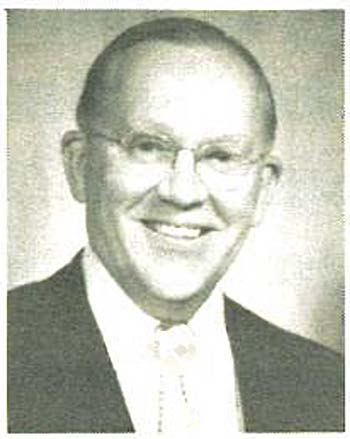

John S. McGuinness, SAM President
The “systems approach” has been popular since the operational researchers during World War II, and the managerial scientists somewhat later, tried increasingly to apply quantitative methods to managerial problems.
Most items of machinery or equipment have parts. Each of these items can be viewed as a system in itself and as part of a larger system as well. Putting all the items of plant and equipment together with the people to operate them, plus the necessary training and motivation, produces the overall system that managers who are not primarily numbers oriented view as an organization. S.A.M. is clearly an organization. It has not possessed, or so clearly been, a system.
Much effort has been devoted this year to make S.A.M. more of a system. This is developmental work, for which the payoff will only be seen after the system has been put into use. But the present must make some sacrifices for the future if an organization (or system) is to progress and grow. It can be useful to note some progress that has been made in making S.A.M. more of a system, because this progress is absolutely necessary to the Society’s future life and health.
It became apparent early in the fiscal year that major organizational changes that had been introduced in late 1978 had not been supported with the necessary infrastructure. A great deal of this year has been devoted to providing this infrastructure. For example, the work within the 20 Areas has clearly been too much for one person, the Area Director, to do adequately. So we are now staffing the Areas with membership, program, and chapter development officers as well as with Deputy Area Directors.
To further help, an Area Officers’ Manual has been developed and distributed to both current and incoming Area Directors. These were mailed in time for spring meetings, at which the new Area officers could be trained by their directors, and in time for further meetings at which these functional Area
Officers could then train their chapter counterparts. Such training has not been given before, as results have shown. The motivation provided by the training is as important as the knowledge passed; I am sure the future will make this clear.
The chapter report formats have been revised and made part of a system that includes reports from the Areas and Regions as well. The system requires a regularly timed, organized submission of reports. Those at each level are sum· marized for those at the next level, and should keep the officers much better informed about what is being done, what is not being done, what help is being given, and what corrective measures are being taken.
A new S.A.M. Meeting Program Guide has been issued, with full speaker outlines and lists of references for the topics covered. This provides adequate material for a full year’s chapter meetings, plus a seminar or workshop, and will be expanded yearly. It permits, in many cases, use of chapter members rather than outsiders as speakers. We hope the guide will help make chapter meeting programs appreciably more informative and more interesting.
Another improvement we have made is a revised Chapter Membership Manual incorporating all the different membership programs that have been until now covered in a number of separate communications. It is hoped that this manual will better help the chapter’s membership program by presenting the whole in an organized fashion. There are many other parts that need to be developed or improved in order to make S.A.M. the system it should be: one in which friendly, willing, knowledgeable, and active members can help themselves by contributing valuably to the advancement of all members. But a significant start has been made this year toward that goal. A system will make the implementation of the five-year plan much easier and more practical. And it should make everyone’s job easier and the results more satisfying as well. SAM-NI
This SAM News International article is from our historical archive, information provided is for reference and archival research about the activities and developments of the Society.
